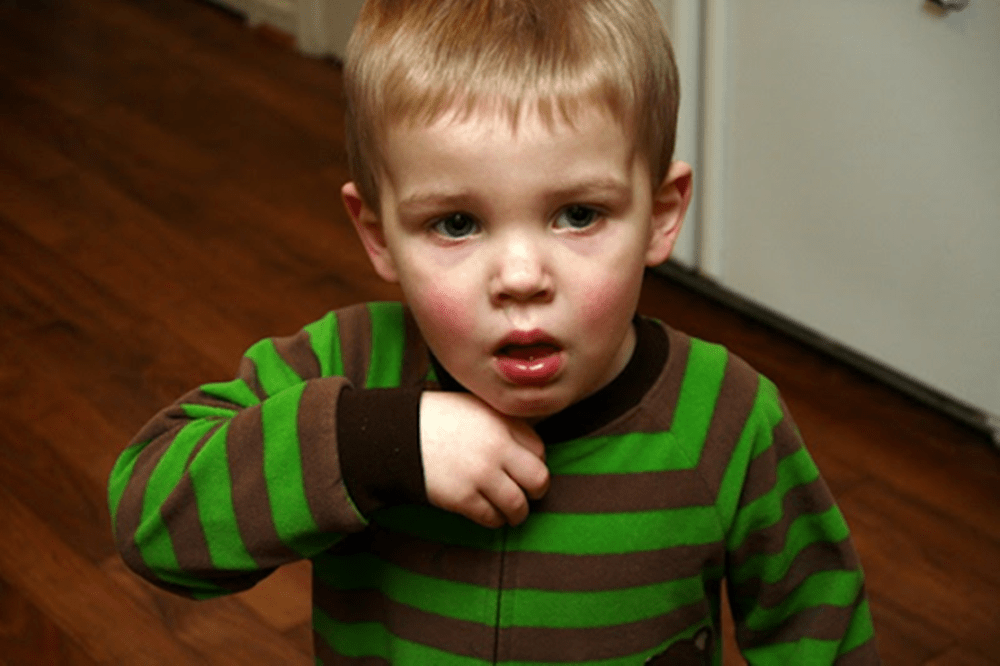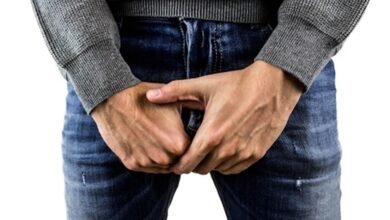Whooping cough | Symptoms, treatment, and vaccinations
Whooping cough

Infectious diseases are amongst the most dangerous illnesses that face humanity due to difficulty controlling them and limiting their spread, like whooping cough.
What do you know about whooping cough, and did you get infected as a child, or did a close relative get it?
In this article, we will discuss everything related to this disease, its symptoms, and its causes, as well as the vaccine needed to protect children against it.
What is whooping cough?
It is a highly infectious disease that affects the upper respiratory tract.
It was also considered a primary childhood disease that affected almost all children before the vaccine discovery.
Whooping cough causes a severe intermittent cough, followed by a loud inhaling noise that resembles a whoop.
It’s called the hundred-day cough since it can last from weeks to months.
Whooping cough is more severe in children than adults.
It usually affects infants less than six months or who haven’t received the vaccine yet.
Deaths due to whooping cough significantly decreased, but they’re still common among infants.
Hence, delivering whooping cough vaccine to pregnant women is certainly recommended.
Whooping cough causes
The disease is caused due to infection by a bacteria called Bordetella pertussis.
Infection occurs due to inhaling droplets released during coughing or sneezing by an infected person.
Infection occurs when an infected person coughs or sneezes releasing, the infected droplets in the air to be inhaled by a nearby person.
Whooping cough symptoms
Symptoms normally take between seven to ten days to appear, but sometimes longer.
Usually, the symptoms start mild and resemble the common cold, like;
- Cough.
- Nasal congestion.
- Runny nose.
- Fever.
However, they eventually worsen in a week or two due to mucus accumulation in the respiratory pathways.
Consequently, this causes severe cough bouts that are difficult to control and may eventually lead to;
- Vomiting.
- Extreme fatigue.
- Difficulty breathing.
- Face redness.
Complications
Adults usually recover without complications, but sometimes they may occur due to severe prolonged coughing.
Complications include;
- Bruising of the ribs.
- Pneumonia.
- Rupture of blood vessels in the skin or eyes.
- Urinary incontinence.
- Abdominal hernia.
More severe complications, however, occur in infants less than six months old and may include;
- Pneumonia.
- Reduced or stopped breathing.
- Dehydration or weight loss.
- Brain damage.
- Convulsions.
How is whooping cough diagnosed?
It’s difficult to diagnose the disease since its symptoms are similar to the flu and common cold.
Therefore, it’s necessary to carry out some tests to confirm the diagnosis, those include;
Blood tests:
A blood sample is drawn and sent to the lab to examine the number of white blood cells (WBCs).
An increase in WBC’s indicates an infection; this test, however, is not specific for whooping cough.
Mouth and throat swab:
The doctor takes a sample by swabbing or suctioning the nasopharynx.
The sample is then examined for the presence of disease-causing bacteria (Bordetella pertussis).
Chest x-ray
The doctor orders chest x-rays to check for pneumonia caused by whooping cough complications.
Pneumonia presents as inflammation and fluid pockets in the lungs.
Treatment:
Treatment depends on the age of the patient and disease severity.
Infants are usually hospitalized since the disease manifestations are more severe and require special care.
If the child cannot keep any food or drink in, he may need to receive intravenous fluids and be isolated from the family.
Moreover, a child may need suction to clear the airways and oxygen if he can’t breathe properly.
Older children and adults receive treatment at home.
Medications used for treating whooping cough include;
- Antibiotics that kill the causative bacteria and help with rapid recovery. Family members also receive a prophylactic dose.
- Antitussives, cough sedatives, or mucolytics are not treatments of choice due to their weak effect.
Whooping cough prevention

The best prevention against this disease is to take the vaccine.
Usually, children take the whooping cough vaccine as part of another vaccine, the Bortedella, Pertussis, and tetanus vaccine (DPT).
Doctors recommend taking the vaccine in childhood as part of the vaccination schedule taken since birth.
The vaccine consists of a group of five injections; children usually receive them at the following ages;
- Two months.
- Four months.
- Six months.
- From 15 to 18 months.
- From 4 to 6 years.
The vaccine helps prevent the disease, but it is not 100% effective.
Teenagers receive booster doses since the vaccine’s immune protection tends to lessen at eleven years old.
Doctors recommend taking booster doses at this age to protect against whooping cough, diphtheria, and tetanus.
Likewise, doctors recommend giving the vaccine to pregnant women in weeks 27 and 36 of pregnancy since it gives the newborn some protection in the first few months of his life.
Side effects of whooping cough vaccine
The side effects are usually mild and include;
- Fever.
- Headache.
- Soreness at the injection site.
- Tiredness or exhaustion.
Home treatments
There are some home remedies for patients who choose home treatment; some of these include;
- Taking plenty of rest; to avoid exhaustion.
- Drinking adequate amounts of fluids; It’s essential to watch for signs of dehydration in infants like dry lips and skin and crying with no tears.
- Eating small meals; to avoid vomiting during coughing attacks.
- The home air must be kept clean and free of irritants that provoke coughing, such as tobacco smoke, aerosol sprays, and smoke from kitchens and fireplaces.
- Wearing a face mask at home; to avoid spreading the disease between family members.
Whooping cough versus regular cough
You’re probably wondering how to differentiate between regular and whooping cough, especially since the symptoms are very similar.
The difference is that with a regular cough, the symptoms subside within a few days and clear away completely with cough medicines.
While in whooping cough, the cough gets worse with time and has that distinctive whooping sound.
Differential diagnosis
Some diseases that resemble whooping cough symptoms include;
- Infection with respiratory viruses, for example, Influenza virus, Adenovirus, Enterovirus.
- Mycoplasma pneumonia.
- Respiratory syncytial virus.
- Chlamydial pneumonia.
When should you seek medical help?
The patient must visit the doctor immediately if any of the following symptoms occur;
- Vomiting.
- Difficult or intermittent breathing.
- Inhaling followed by a loud whooping sound.
- Face turning red or blue with repeated cough bouts.
In conclusion, although whooping cough may have severe symptoms in childhood, it can still be controlled by proper prevention methods and seeking medical help as soon as symptoms appear.



